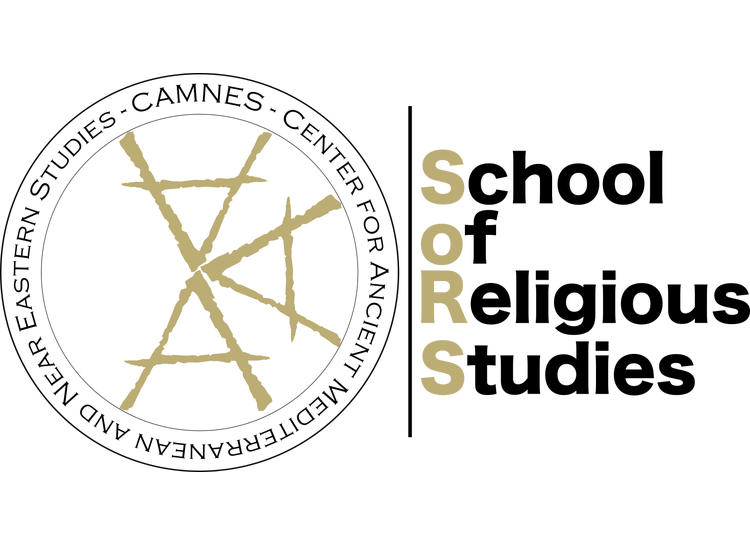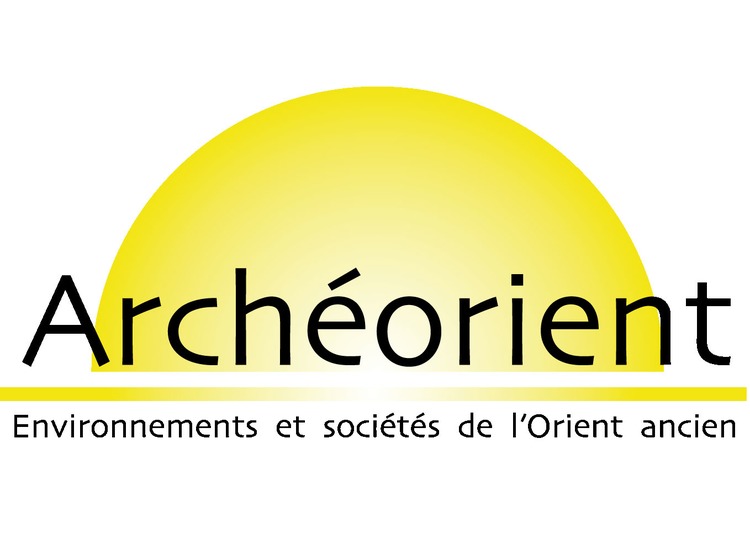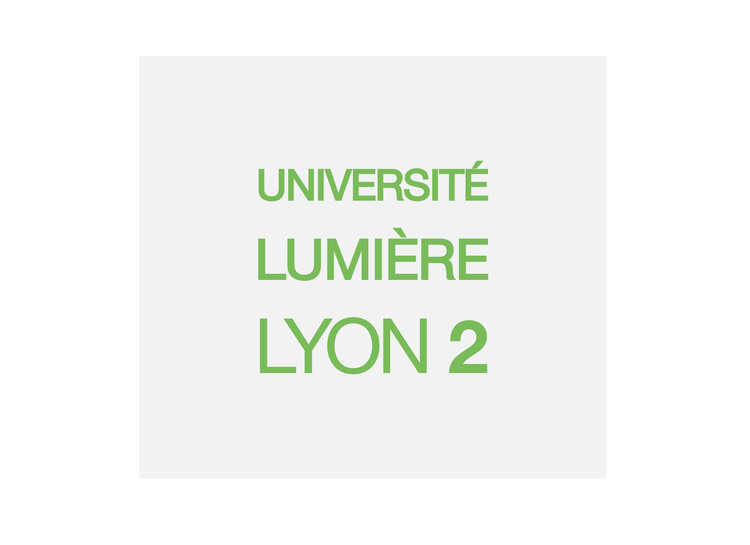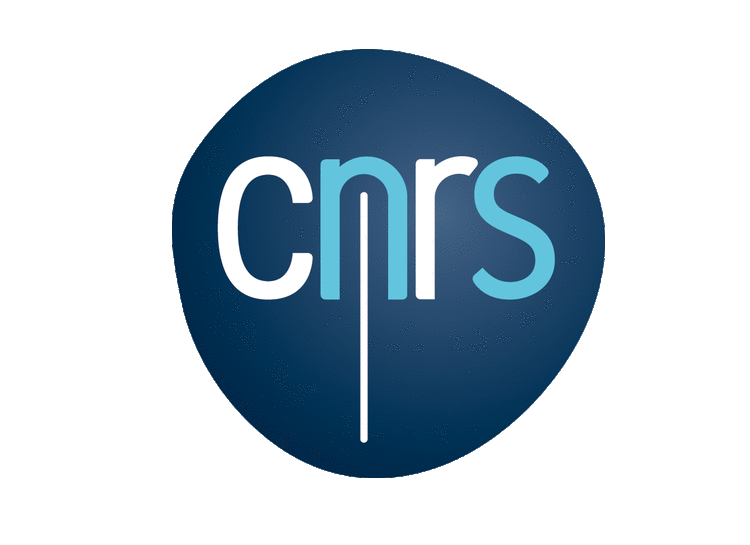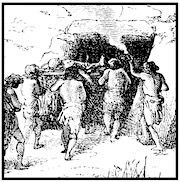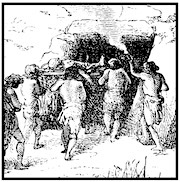Eleonora Carminati - ec.carminati@gmail.com
(Ca' Foscari University)
Early Bronze Age Kurgans in the Southern Caucasus: Re-thinking the Early Kurgan Period
The tradition of burying the dead in kurgans in the South Caucasus became predominant from the end of the Kura–Araxes period (first half of the 3rd millennium BC). The diffusion of kurgans seems to complement the appearance of a new cultural phenomenon in this area, classified under the labels of Martqopi and Bedeni cultures. A major cultural shift is attested from the middle of the 3rd millennium BC, when communities abandoned previous settled areas and embraced a more nomadic lifestyle. It is also from this phase that, for the first time, burials were characterized by distinctive features, represented by distinguishing architecture, elaborate burial customs, and rich grave assemblages. This phase is furthermore defined by the rise of a new ruling group, portraying itself through burial assemblages. South Caucasian scholars have been familiar with burials in kurgans since the 1940-50s with the excavation of the Trialeti and Bedeni burial mounds. However, until now, only a few scholars have tried to combine the data available and produce a comprehensive and up to date evaluation of this period. Focus of this talk will be a comprehensive discussion of the major features characterizing the Early Bronze Age kurgans in the South Caucasus, from its principal type-sites, to the burial customs attested and the material culture preserved. This paper will also address the problem of the chronological attribution of this phase, which is still largely debated among scholars, by re-evaluating and combining existing relative and absolute chronologies. This data is further enriched by the results of more recent surface surveys, which have deepened our understanding of the broader environment in which Early Bronze Age communities were living.
Michèle Casanova - michele.casanova@univ-lyon2.fr
(Archéorient,CNRS/Université Lyon 2)
Ritual practices and burial patterns in the Lenkoran Valley (Azerbaïdjan)
We have discovered during recent excavations in the Lenkoran Valley some necropolises with graves dating from Late Bronze Age-Early Iron Age. The funerary goods are similar with those coming from kurgans dating from the same period which were found in South Caucasus and Northwestern Iran for instance Araxe valley. The dead are buried at Mondidigah (1200M ASL) in funerary chambers limited by stone and covered by a capstone. We have also at CucuTuk (350M ASL) a deposit of few pottery under a mound made in different sizes of stones mixed with earth. We have no evidence of the kurgan tradition in those necropolis, but the location of the necropolises suggests a symbolic relation with the surrounding landscape.
Lorenzo Crescioli - lore.crescio@hotmail.it
(CAMNES)
Scythian Culture in the Caucasus and Eastern Anatolia: a comparative analysis of First millennium BC Kurgans
Even though the kurgan appears during the 5th/ 4th millennia BC, it is during the 1st millennium BC that such a funerary typology reached its greatest expression in size, monumentality, and holiness among the Scythians in Central Asia. Moreover, the Scythian royal kurgans acted as aggregation center for the community with a deeply rooted religious and spiritual but also social, economic and political meaning. Within this perspective, during the 8th century BC the Northern Caucasus region is characterized by one of the most important and oldest Scythian cultural group, whereas the Southern Caucasus and Eastern Anatolia seem affected by different dynamics, only being characterized by smaller, sporadic and less monumental evidence of Scythian nature. The possible presence of Scythian pastoral groups in this area is presumably related to their movement towards Near East and eastern Europe between 8th and 7th century BC. On the basis of the little material available and of recent researches, I will try to identify the peculiar characteristics of Scythian kurgans in the Caucasus and Eastern Anatolia and the aspects of local Scythian culture, by comparing with the most well-known Scythian cultures of Central Asia.
Şevket Dönmez - donmezsevket@gmail.com
(Istanbul University)
Horse Burials in Anatolian Protohistory
As a result of the archaeological research, no settlement belonging to the Eurasian Horseback Riding Warrior-Nomads were found in Anatolia. Battle- picks, arrowheads, harness pieces and similar finds aside, kurgans and tumuli are the most important architectural element for the Eurasian Horseback Riding Warrior-Nomads. To this day kurgan and tumuli, which were uncovered in unregistered excavations and scientific archaeological surveys and excavations are in İmiler in Gümüşhacıköy district in Amasya, Norşuntepe in the provincial borders of Elazığ, Phrygian capital of Gordion/Yassıhöyük near the Polatlı district in Ankara and Demircihöyük in the borders of Eskişehir Province. The common trait of these kurgans and tumuli is that they contain the horse burials. Even though the presence of the horse burials other than these examples are known, it is understood that these have not attract the attention of the scholars of the field or they were overlooked. In this paper the older and contemporary evidence will be evaluated together and the meaning of the horse burials in the Anatolian archaeology will be discussed.
Yilmaz Selim Erdal - yserdal@hacettepe.edu.tr
(Hacettepe University)
with
Omur Dilek Erdal (Hacettepe University) and
Bakhtiyar Jalilov (Institute of Archaeology and Ethnography, Azerbaijan National Academy of Sciences)
Two Kurgans from Azerbaijan: interpretation of human remains from Uzun Rama
Skeletal remains from the kurgans of Uzun Rama 1 and 5 from Goranboy, which were dated to 3600-3160 BC, have been analyzed by bioarchaeological methods. There were very few articulated skeletons. These data support that individuals were consecutively buried in flexed positions and with a plenty of grave goods. Minimum number of individual is calculated as 83 from Uzun Rama 1 and 114 from Uzun Rama 5. Both graves hosted for male and female individuals. The number of male individuals is a little higher than females. Although few in number there are also sub-adult individuals including fetuses and infants. These data suggest that kurgans were used for both sexes and all age groups without any significant discriminations in terms of demographic parameters. Uzun Rama kurgans, which were built from mudbricks and covered with timber, soils and pebbles, have a burial chamber with dromos. The signs of burning were observed during the excavation. The graves were severely burnt. Approximately 28,000 bone fragments were examined according to their color, fragmentation, twisting and squeezing. It is suggested that 93% of bone fragments were affected by fire. However, considering their whitish color, it can be said that only 21% of them was exposed to severe fire. Others were dark gray, brown, and black. These data suggest that individuals were not cremated; the graves were intentionally burned at the end of their use. Intentional burning is thought to be associated with closing ceremonies. Very few skeletal biological information was collected on the bones due to the fragmentation. However, the lesions related to trauma and infection were found to be quite low. Nevertheless, anemia was a significant health problem. Osteoarthritic lesions show intense daily activities. These skeletal data can help us to understand the burial customs and health conditions of nomads in southern Caucasia.
Zaur Hasanov - zaurmail@gmail.com
(Institute of Archaeology and Ethnography, Azerbaijan National Academy of Sciences)
Two different funerary customs in the Kurgans of the Eastern part of the South Caucasus in the Early Iron Age
During this period sharply differing burial rites are distinguished in the archaeology of Azerbaijan. The first one was registered in the Malyi kurgan in the Aghjabadi and Mingechaur kurgans. These funerary customs have parallels in the early nomadic graves of the Circum-Pontic area of the 7th-6th centuries BC marked out by S.A.Skoryi. Among them: moat and ditch around kurgan; clay moat around a grave; covering of this moat with wood, cane, or grass; hipped roof-like wooden structure over the grave; traces of burning of the wooden structure; horse burial; horse harness; wooden flooring, or stretcher; sacrificial meat; metal knobs with bells and jingles; a cup with golden upholstery; stone vessel, or tile. In the Malyi and Mingechaur kurgans Scythian type weapons and a horse harness were found. The second type of burial rite was registered in the large earth kurgans in Khojaly. These are collective burials with simultaneous cremation and supine skeleton inhumations with East-West orientation, plus traces of a fire ritual. This combination of archaeological indicators is specific to the Saka graveyards of the South Aral Sea area (Sakar-Chaga 6) of the 8th-7th centuries BC. They were marked out by L.T. Yablonsky. In the large earth kurgan No.2 in Khojaly there were found two types of buckles from a horse harness. The first one, with a depiction of a feline predator, has analogies in the Scythian graves of Circum- Pontic region. The second one – elongated – in the Sacian burials of the Aral sea area (Uigarak, Sakar-Chaga) and in the horse burial with the Scythian type harness in Norshuntepe, Anatolia. All this data points to the appearance of these two types of funerary ceremonies, in the Early Iron Age archaeology of Azerbaycan, from the Circum-Pontic and Aral sea regions.
This research has received funding from the European Union's Horizon 2020 research and innovation program under grant agreement No 734645, “Knowledge Exchange and Academic Cultures in the Humanities. Europe and the Black Sea Region".
Brenna Hassett - b.hassett@nhm.ac.uk
(Natural History Museum)
with
Haluk Sağlamtimur (Ege University)
The radical death of the 4th Millennium: contextualizing human sacrifice at Başur Höyük
This paper will look at the unique Early Bronze Age cemetery at the site of Başur Höyük, dating to the EBA 1 period (3100-2800). Başur Höyük is a large tell site on the Başur River, in the Upper Tigris region of southeastern Turkey. Rescue excavations have uncovered evidence of several thousand years of occupation, alongside a number of stone-slab sided and capped cist graves of varying sizes. The Early Bronze Age cemetery includes an unprecedented number of high- status burial goods and a particularly impressive number of bronze objects. The cemetery also preserves evidence of radical death practices that are previously unknown for the Upper Tigris region; specifically, retainer burial and a mass death pit. The evidence for human sacrifice will be discussed, along with the bioarchaeological analysis of the human remains from the cemetery and mass death pit. The presence of radical death practices at Başur Höyük at the end of the 4th millennium will be discussed with reference to the ‘biosocial’ identites of those individuals buried elsewhere in the cemetery. This approach uses the techniques of biological anthropology to uncover the lived experiences from evidence of sex, age, activity markers and health status through life. This comparative approach will allow further insight into the changing nature of burial practice in the Bronze Age.
Maria Ivanova-Bieg - ivanova@uni-heidelberg.de
(Institut für Ur-und Frühgeschichte und Vorderasiatische Archäologie, Universität Heidelberg)
Constructing ancestry: origins of the kurgan tradition in the fourth mill. BC
Among numerous traditions of burying the dead in earth mounds, the barrows of the Eurasian steppe have earned a most prominent place in the public consciousness. The association of barrows with steppe people in archaeology is strongly emphasised by the widespread use of a term of Eurasian origin (the old Turkic „kurgan") for burial mounds in disparate geographic and cultural contexts. The rise of “kurgan“ burials in the early centuries of the fourth millennium BC is well documented in the piedmont of the North Caucasus and the adjacent steppe areas. This paper considers the historical context in which these early monumental structures made their appearance and calls into question the assumption that the various kurgan traditions across Eurasia and the Near East originated in this area. Moreover, I explore the new meanings ascribed to the monumental burial mounds by the fourth mill. North Caucasian societies and the role of these highly visible, monumental burial structures in relation to territorial rights, political leadership and control.
Goderdzi Narimanishvili - goderdzi_narimanishvili@yahoo.com
Georgian National Museum)
with
Nino Shanshashvili Georgian National Museum) and
George Narimanishvili (Free University of Tbilisi)
Kurgans of Trialeti: The Roads to Eternity
Trialeti Culture of the Middle Bronze Age is represented with huge burial kurgans of “kings” and chiefs. The name of the culture originates from the study of archaeological sites from Trialeti plateau in Tsalka region. In connection with the construction of the Tsalka Reservoir and Khrami hydropower station, archaeological works have been carried out there by B.A. Kuftin. After excavation of kurgans of Trialeti Culture, completely appeared a brilliance of the burial ritual. Special attention deserves the unique, hitherto unknown and very precious materials, which were discovered in a burial chamber of a deceased. Golden and silver adornments, standards, toreutics, silver and bronze weapons, black polished and painted pottery, which were discovered in the kurgans of the first half of the 2nd millennium B.C. thoroughly occupied its place not only in Caucasian, but in the world culture treasury. B. Kuftin named the new archaeological culture as "The Brilliant Culture of Trialeti Great Kurgans", which today is known as the "Trialet Culture". It must be mentioned here a rather high level of development of the cult architecture in the Middle Bronze Age. This is evidenced by the technique of constructing of kurgans, their ideological and aesthetic aspect and architectural appearance. The construction of such compound complexes of this scale, required a lot of time, money and labor, and possibly lasted for several years. Apparently, the construction of a large kurgan used to begin even during the lifetime of the buried. With the funeral rite were connected stone-paved roads, which were built for the procession. They were an organic part of kurgan. The ritual roads of Trialeti kurgans have no analogues in the distribution area of the kurgan cultures. The grandeur of stone roads is evidenced by their size. The length of some of them reaches 500 meters, and the width is 5-6 meters. They adjoin to kurgan exactly from the east and sometimes are a continuation of a dromos. Ritual-processional roads, discovered in Trialeti, date from the end of the 3rd millennium B.C. and the beginning of the 2nd millennium B.C. and belong to the Middle Bronze Age. The ritual roads of Trialeti kurgans have no analogues in the distribution area of the kurgan cultures.
Aynur Özfırat - aynurozfirat@gmail.com
(Mardin Artuklu Üniversity, Faculty of Letters, Archaeology Department)
Kurgans of the Highland of Eastern Anatolia: From the Kura-Araxes to the Urartian Kingdom
The paper analyses the spread of kurgans in the highland of eastern Anatolia from the end of Kura-Araxes until to the Urartian Kingdom-Middle Iron Age, especially focusing on the results of our excavation of Mt Ağrı-Bozkurt kurgan cemetery and survey in the the regions of Mt Ağrı and Lake Van basin. It summarises available evidence of previous and recent investigations in the eastern Anatolia and compares it with contemporary evidence from the neighbouring regions of the southern Transcaucasia and northwestern Iran. Kurgans and the related cultures spread in the northeastern part of the eastern Anatolian highland, accordingly Erzurum-Kars Plateau and Mt Ağrı regions are in the borders of kurgan culture. Actually, Lake Van basin is not in the borders of the kurgan tradition, kurgans being so small in number here that can be considered non-existent. Only to the north of the basin, there are some kurgans on the outskirts of the Süphan, Tendürek and Aladağ volcanoes which were geographically connected to Mt Ağrı and at the same time a large barrier separating Lake Van basin and northeastern Anatolia. The kurgans of the eastern Anatolia constitute the western and southwestern border of this tradition that spans southern Transcaucasia and northwestern Iran. They continued being almost the sole burial tradition from Middle Bronze Age to the end of the Early Iron Age. Early Bronze Age and Urartian period represented by a few examples in the eastern Anatolia. Settlement pattern has noticeably been changed by the appearance of the kurgan type burials in the region which resulted in a new culture being formed in the Middle Bronze Age. The cemeteries of Middle Bronze Age, found widespread on the highlands, no related settlements is observed. Settlement pattern again changed in Late Bronze-Early Iron Age, as shown by the highland fortresses-cemeteries.
Modwene Poulmarc'h - modwene.p@live.fr
(Laboratory Archéorient, Cnrs-Umr 5133)
Terminologies, architectural traditions and burial practices of the South Caucasian Kurgans from the Chalcolithic to the Middle Bronze Age
Kurgans appear in the Southern Caucasus during the first half of the 4th millennium and since then they represent one of the main funerary traditions of the region for millennia. Archaeological data show an impressive variability of the south Caucasian kurgans in terms of their dimensions, architectural traditions and burial practices. This variability of the archaeological data is accompanied by a bewildering variability of terminologies used in publications and which often correspond to the same funerary “fact”. For instance, the term “kurgan” is often used as a synonym for cromlech, barrow and burial mound, thus leading to ambiguity and confusion. What is more, even if hundreds of kurgans have been excavated for almost a century in the Southern Caucasus, do we really know about these funerary practices from an archaeo-anthropological point of view? This paper aims to present a review of the available documentation in order to pose questions on terminology, architectural variability and on the still dramatic lack of information concerning the body-treatment, funerary gestures and the biological identity of the people buried in the kurgans.
Sabine Reinhold - sabine.reinhold@dainst.de
(Eurasia-Department, German Archaeological Institute, Berlin)
Monuments, landscapes and new social transcripts in the 4th Millennium BC – On the emergence of the burial mound in the North Caucasus and beyond
Hundreds of thousands of burial mounds of prehistoric date are the most ubiquitous monuments found in Eurasia from the Atlantic coasts to the lowlands of China. Before any other artificial alterations, these monuments have transferred the steppes and forest steppe zone into a unique ancestral landscape full of meaning. Mounds stand in rows and until today direct lines of sight, operate as orientation points and guidelines for infrastructure. Where they are found in clusters, they form nodal points of local importance and huge burial mounds are inevitably linked to an elite or royal iconography of death. But when did this dramatic transformation of the horizons in Eurasian landscapes start? What was the social background for communities to shape so irretrievable artificial landscapes? To find an answer to this, we have to look into the North Caucasian steppes and their neighbouring areas, where first visible monuments were built for some of the deceased already in the 5th millennium BC. This was the onset of a new arrangement: a burial, associated commodities and a monument that first time focused on an individual protagonist. It was, yet, not until the early 4th millennium, when in Caucasia and the Pontic steppes the burial mound became a major focus of monumental architecture. Mounds became a major focus for the social setting of societies, which might be read as a shift of importance from the living to the ancestral world. But the arrangement of splendid funerals, including building mounds, was an act of the living not the dead to negotiate their social positions and status. This presentation will discuss the importance of the building process of burial mounds within the framework of a new social transcript of power exemplified in the Maikop culture of the North Caucasus. On the basis of various impulses, Maikop society developed a new social ideology that involved new forms of materiality and a new philosophy in the interrelation of humans and objects. The building sites of the burial mounds were simultaneously stage for display and location of the appropriation of this new form of sociality. The resulting monuments acted as social mortar that integrated communities around key figures of common ancestry. Their burial monuments created social meaning far beyond the individuals buried or the communities, which organised the funerals. An ideology of power is manifest in these early mounds, which apparently highly struck the spirit of its time – within the late 4th millennium BC the entire North Pontic area was dotted with burial mounds and the early 3rd millennium BC saw them spreading incredible fast all over Eurasia.
Viktor Trifonov - viktor_trifonov@mail.ru
(Institute for the History of Material Culture, Russian Academy of Sciences, Saint-Petersburg)
with
Natalia Shishlina (State Historical Museum, Moscow)
The Maykop culture funeral structures, Early Bronze Age, North Caucasus: a new aspect of diversity
Increasingly high standards are being applied to recent excavations in the North Caucasus (2014 – 2017), of the kurgan 1, originally explored by N. Veselovsky in 1898 near Tsarskaya (modern Novosvobodnaya, Klady cemetery), which are providing new data related to the assessment of the diversity of the Maykop culture funeral structures. In addition to substantial contribution toward a better understanding of the Novosvobodnaya megalithic constructions, a new type of burial structure was discovered. The stone base of the structure (approx. 3.7 X 3.5 X1.5 m) is built on the ground surface with a front entrance to Southeast, and a log-framed pebble and clay- coated floor. Above the base is a rectangular shaped drystone-wall structure with a thick clay-and-wood roof. The stratigraphy of the mound demonstrates that the clay-roofed tomb was built first and then the megalithic tomb (ca. 3200-2900 BC) was erected next to the original mound edge with a huge new mound, which buried both the earlier mound and the dolmen. There are four reasons this excavation is so important. First, the discovery shows that the widespread Maykop culture burials “on the ground surface”, “on the pebble pavement”, and “inside of log-frame” may actually represent highly deteriorated or poorly excavated single group of tombs on the ground surface. Second, it persuades us to re-examine the role of clay as a construction material in the Maykop tradition of funeral and residential buildings. Third, it facilitates reconstruction of more relevant trajectory of the development of Maykop funeral practices within the time-space framework. Finally, recent discoveries create a new background for comparative analysis between funeral practices in the Caucasus, Northwestern Iran, Eastern Anatolia and Northern Syria in the IVth mill. BC.
Artavazd Zakyan - artavazd.zaqyan@gmail.com
(Ministry of Culture of the Republic of Armenia "Service for the protection of Historical Environment and Cultural Museum Reservations)
with
Mateusz Iskra (University of Warsaw) and
Hasmik Simonyan
(Ministry of Culture of the Republic of Armenia "Service for the protection of Historical Environment and Cultural Museum Reservations)
The internal arrangement and reuse of Kurgan chambers from Metsamor Cemetery
Excavations conducted in Metsamor cemetery have unearthed nineteen kurgans dated to four periods: Middle Bronze Age (18th-16th century B.C.), Late Bronze Age (16th- 12th century B.C.), Iron I (12th-9th century B.C.) and Iron II (9th- 7th century B.C.). They considered being a burial place of local elite during centuries. Most of the kurgan chambers were reused several times in different periods. Therefore, in many cases archaeological material from the chambers is scattered and mixed. However, based on discovered material, unpublished drawings, photos and analogies from the Ararat Plain it’s possible to reconstruct some stable features of the internal arrangement of kurgan chambers from each period. Moreover, methods of removing the earlier burials as well as process of reuse of burial goods can be shown. Paper includes completely new data from kurgans no. XVIII and XIX which were recently explored by Armenian- Polish mission in 2016 and 2017.
